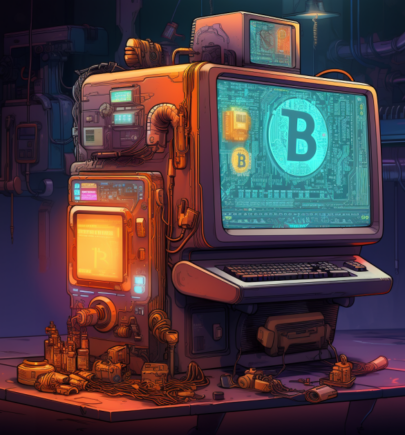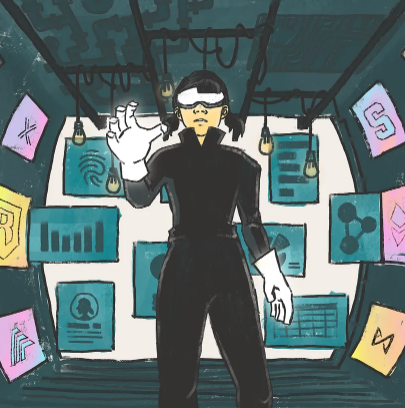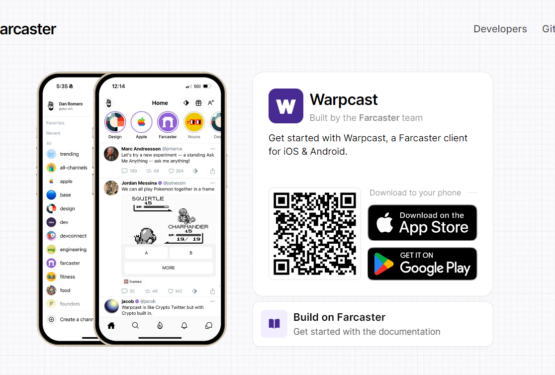Runes: A novel way to create fungible tokens Bitcoin

What are Bitcoin Runes?
Bitcoin Runes, conceived by Casey Rodarmor, the developer behind Bitcoin’s Ordinals protocol, is a token standard tailored for the creation and management of fungible tokens on the Bitcoin blockchain. It was launched around the Bitcoin halving event at block 840,000. Unlike BRC-20 and SRC-20 tokens, which also function on the Bitcoin blockchain, Runes operate independently of the Ordinals protocol and are engineered to be simpler and more efficient.
In September 2023, Casey Rodarmor shared a blog post introducing the concept of a new token standard called Runes. He subsequently developed and implemented this protocol using the same client as the Ordinals theory. The Runes protocol was hard-coded into the Bitcoin blockchain at block 840,000 in April 2024.
“Creating a good fungible token protocol for Bitcoin might bring significant transaction fee revenue, developer mindshare, and users to Bitcoin.” – Casey Rodarmor, creator of Runes
How do Runes work?
UTXO-based Efficiency:
Bitcoin Runes utilize the Unspent Transaction Output (UTXO) model, a fundamental concept within Bitcoin. Imagine collecting unspent digital change from your wallet to make a new purchase. Similarly, transactions on the Bitcoin network utilize unspent UTXOs as inputs for new transactions. This ensures the uniqueness and legitimacy of each Bitcoin, preventing duplication and fostering trust in the network.
On-chain Data Storage:
Unlike other protocols that might rely on external data storage or special tokens, Runes utilize Bitcoin’s native features for on-chain data storage. This minimizes the creation of “junk” UTXOs, which can accumulate and slow down the network, leading to higher transaction fees and delays.
Think of on-chain data storage as a secure message tucked away within a Bitcoin transaction. The OP_RETURN field acts like a magic pen, allowing you to leave a mark without affecting the actual Bitcoin transfer. This keeps the network efficient by minimizing additional processing power needed for these messages.
Lightning Network Compatibility:
Bitcoin Runes boasts compatibility with the Lightning Network, a separate layer built on top of Bitcoin. This compatibility allows Runes transactions to bypass the Bitcoin network’s potential delays and high fees by leveraging the Lightning Network’s faster and cheaper processing power.
This combination of UTXO efficiency, on-chain data storage, and Lightning Network compatibility positions Runes as a promising protocol for expanding Bitcoin’s functionality and fostering a more versatile ecosystem.
Comparison: Runes vs BRC-20 vs SRC-20
| Feature | Runes | BRC-20 | SRC-20 |
|---|---|---|---|
| Purpose | Create and manage fungible tokens on Bitcoin | Create and manage fungible tokens on Bitcoin | Create and manage fungible tokens on Bitcoin |
| Creator | Casey Rodarmor | Domo | Mike In Space |
| Launch Date | April 2024 | March 2023 | March 2023 |
| Model | UTXO model | UTXO model | UTXO model |
| Design | Simplified and efficient, not reliant on Ordinals | Relies on Ordinals protocol | Immutable data storage using Bitcoin Stamps |
| Compatibility with Lightning | Yes | No | No |
| Errors | Minimal, uses established Bitcoin models | Potential issues with scalability and efficiency | Higher data storage requirements, potential blockchain bloat |
| Open Mint | Yes, with flexible minting options | Yes, but with potential scalability issues | Yes, with an emphasis on data permanence |
| On-chain Footprint | Minimal, utilizes OP_RETURN for metadata storage | Larger due to reliance on Ordinals for inscribing data | Significant due to permanent data storage in UTXO |
Etching and Minting Runes on Bitcoin
The process of initiating a new Rune is referred to as Etching. Those looking to etch a new Rune must specify details such as the name, symbol, ID, supply amount, divisibility, and parameters concerning the Rune’s generation and distribution within the OP_RETURN output. Additionally, creators have the option to include a “premine” during the etching phase, where a predetermined amount of the Rune is reserved for the creator before it becomes available to the public.
Following the etching phase, Runes can be minted through either open or closed mints. Open minting allows anyone to mint a Rune subsequent to the initial etching, enabling individuals to create a mint transaction for a fixed quantity of new Runes. Conversely, closed mints restrict the creation of new tokens until specific conditions are met, such as a designated time frame. Once these conditions are fulfilled, the minting process ceases, thereby capping the token supply.
Edicts dictate the guidelines for Rune transfers post-etching or minting. Through the edict function, various actions like batch rune transfers, airdrops, and the transfer of all minted Runes to a single account can be executed efficiently.
Traction
Just on the day of its launch, April 20, the introduction of Runes caused a significant spike in Bitcoin transaction fees, reaching unprecedented levels. The average transaction fee surged to more than $127, marking a notable increase in transaction costs.
Source: BitinfoCharts
The Nascent Runes Ecosystem
Source: Twitter
The Bitcoin Runes ecosystem is growing steadily. In the words of its creator, “Runes were built for degens and memecoins, but the protocol is simple, efficient, and secure.”
Tokens
At the time of the writing and according to the OKX site, these are the top 5 projects in Runes by market capitalization
Image: Okx.com
PUPS
Bitcoin Puppets is one of the most well known and valuable collections in the Ordinals ecosystem, and probably one with one of the most visually unique projects on Bitcoin as the collection features monkey characters that look like they were hastily thrown together in Microsoft Paint.
$PUPS is the rune associated with Bitcoin Puppets, and were airdropped for free to Bitcoin Puppets holders. The market cap is over $160 million at the time of this writing.
RSIC
Before Runestone significantly raised the stakes, the RSIC Metaprotocol caught the Bitcoin community’s attention in January by airdropping 21,000 inscriptions to Ordinals collectors’ wallets. Named after ASIC mining computers, the RSIC project is a gamified initiative allowing holders to mine tokens in anticipation of the Runes protocol launch. The excitement surrounding this project has propelled its market cap to over $230 million at the time of this writing.
DOG
$DOG is a decentralized, community-led memecoin on the Bitcoin blockchain. It launched on April 24th, 2024, through a volunteer-organized airdrop to the Bitcoin Ordinals community, with no team allocation or presale. DOG’s mission is to “go to the moon” and bring millions of people to Bitcoin.
DOG operates on the Runes Protocol on Bitcoin and is tradable on Bitcoin’s Layer 1 (L1), Layer 2 (L2) solutions, and centralized exchanges (CEXs). The coin has more than $766 million in market cap.
Wallets
While Bitcoin Runes are minted on the Bitcoin blockchain, they require specific wallet applications for asset management and custody. Users can use Ordinals-compatible wallets like Xverse, Unisat or Magic Eden Launchpads.
Runes launchpads allow Rune project creators and founders with a launching platform, and an initial community to embark on their journey. Among the most populars are Bitcoin Rune or Luminex.
Marketplaces
To facilitate the listing and exchange of runes, marketplaces are needed. Several well-know crypto companies decided to incorporate runes in their service offering:
- OKX launched a marketplace specifically for trading Runes, where users can list and purchase various Runes such as RSIC and DOG•GO•TO•THE•MOON.
- The NFT platform Magic Eden has introduced a dedicated section for Bitcoin Runes, including a pre-rune section tailored for upcoming Bitcoin Rune projects.
- Whales Market, a pre-market / OTC platform, provides users with a pre-launch platform where users can trade their TGE (Token Generation Event) allocations for Bitcoin Rune projects.
Conclusions
- Bitcoin Runes presents a simplified, novel and efficient token standard tailored for fungible tokens on the Bitcoin blockchain. Unlike other token standards like BRC-20 and SRC-20, Runes operate independently, offering a simpler alternative for token creation.
- Operational Mechanisms: Bitcoin Runes leverage the UTXO model, ensuring efficiency and security within the Bitcoin blockchain. The process of etching and minting Runes allows for flexible token creation, with options for premining and various minting methods, including open and closed mints.
- Growing Ecosystem: The Bitcoin Runes ecosystem is expanding steadily, with support from launchpads, marketplaces, and wallet applications. This growth indicates increasing interest and adoption of Bitcoin Runes, driven by its simplicity, efficiency, and security.
Final words
Given the simplicity offered by Bitcoin Runes for creating new tokens on the Bitcoin network, it could pose significant competition with Ethereum’s ERC20 tokens. However, this competitive scenario not only fosters the ongoing development of both blockchains but also benefits users by providing them with greater investment opportunities as well as methods to be part of different communities.
This article has been written and prepared by Renato Martinez, a member of the GCR Research Team, a group of dedicated professionals with extensive knowledge and expertise in their field. Committed to staying current with industry developments and providing accurate and valuable information. GlobalCoinResearch.com is a trusted source for insightful news, research, and analysis.
Disclaimer: Investing carries with it inherent risks, including but not limited to technical, operational, and human errors, as well as platform failures. The content provided is purely for educational purposes and should not be considered as financial advice. The authors of this content are not professional or licensed financial advisors and the views expressed are their own and do not represent the opinions of any organization they may be affiliated with.












